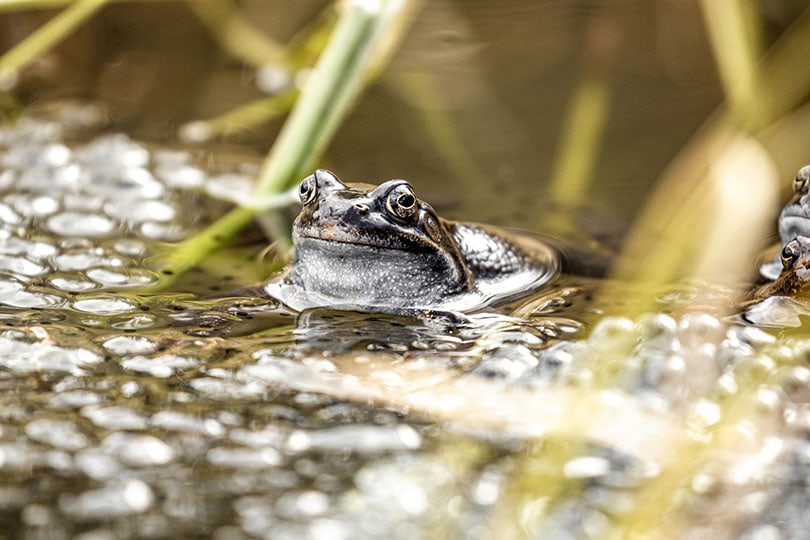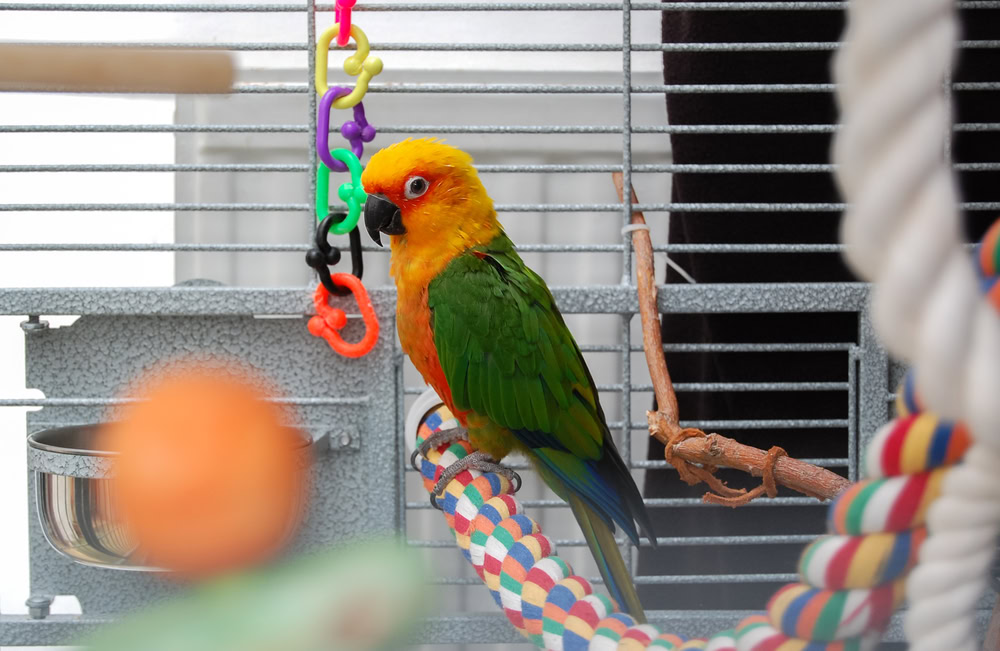Click to Skip Ahead
Have you ever wanted to keep a frog as a pet? Well, it’s quite possible, and many people do. They can make fascinating pets, but it’s vital to learn a little about them, including how many eggs they lay, before searching for the ideal species.
Generally speaking, frogs lay a lot of eggs. There are over 5,000 species of frogs, and each one lays a different amount of eggs. Frogs can lay anywhere from 2,000 to 20,000 eggs each cycle.
Such high numbers are crucial for the survival of the species. So, stick around, and we’ll explore why frogs lay so many eggs and much more.

How Many Eggs Do Frogs Lay Each Time?
Frogs can lay thousands of eggs, but the specific number of eggs each frog lays in a cycle depends on the species. For instance, the common frog can lay 3,000 to 6,000 eggs each time. Estimates show that 1 in every 50 eggs will hatch into a tadpole. The rest either get eaten by fish, washed away, or simply don’t hatch.
Once a frog is 4 years old, it’s sexually mature enough to reproduce. Hibernation ends in February, and the frogs begin to gather in breeding grounds around March. Here, the females lay the eggs, and the males fertilize them.
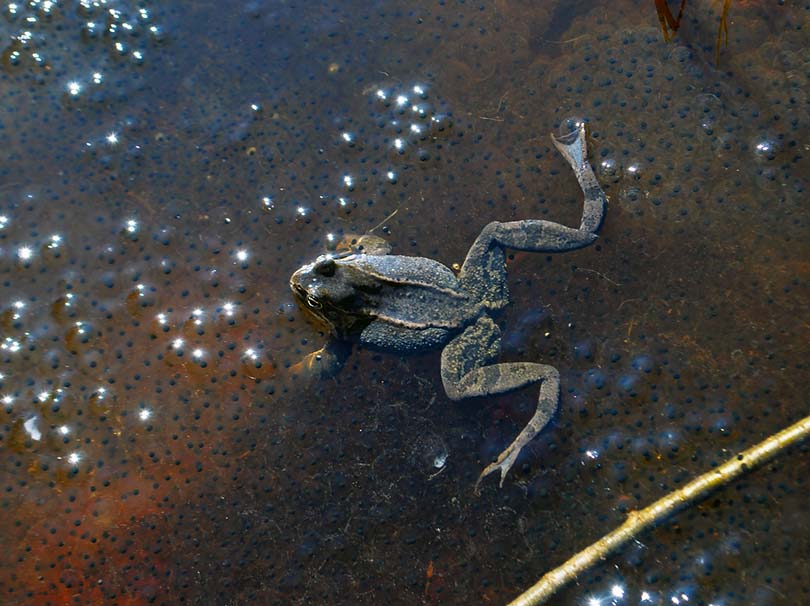
How Many Frog Eggs Survive?
Imagine laying thousands of eggs and having only a handful survive. Well, that’s the reality that frogs face in the wild. Even after producing so many eggs, not all will hatch into tadpoles. Perhaps that’s not bad, considering the ecosystem requires a delicate balance.
An excellent example is the White’s tree frog, which hatches 100 tadpoles out of every 1,000 eggs. If the White’s tree frog, for instance, lays two clutches in a year, only 200 tadpoles will hatch. This is because female frogs don’t tend to their eggs. All they do is lay them and go on their way. The eggs are left to the mercy of the environment.
However, it’s worth noting that there’s an exception to this. The poison-dart frog is among the few that protect its eggs. While it’s hard for others to guard thousands of eggs, this species only lays 2 to 12 eggs each time. The number is small enough for males and females to stand guard until they hatch.
Other species, like the female glass frog, leave the parental duty to the male. The male frogs guard the eggs until they hatch. Also, some swallow their eggs, like the male Darwin frog, and carry them until they hatch. These techniques improve the chances of the eggs surviving, and it’s why not all species of frogs lay thousands of eggs.
How Do Frogs Lay Eggs?
Frogs rely on amplexus to reproduce, meaning they use external fertilization. It requires the female frog to lay the eggs. Only then can the male frog release its sperm to fertilize them. Any clutch of eggs that doesn’t get fertilized won’t hatch tadpoles.
Amplexus is when the male frog climbs on the female’s back, signaling the start of the mating season. The eggs contain an embryo that becomes a zygote after fertilization. This will, in turn, develop and become a tadpole when it’s ready to hatch.
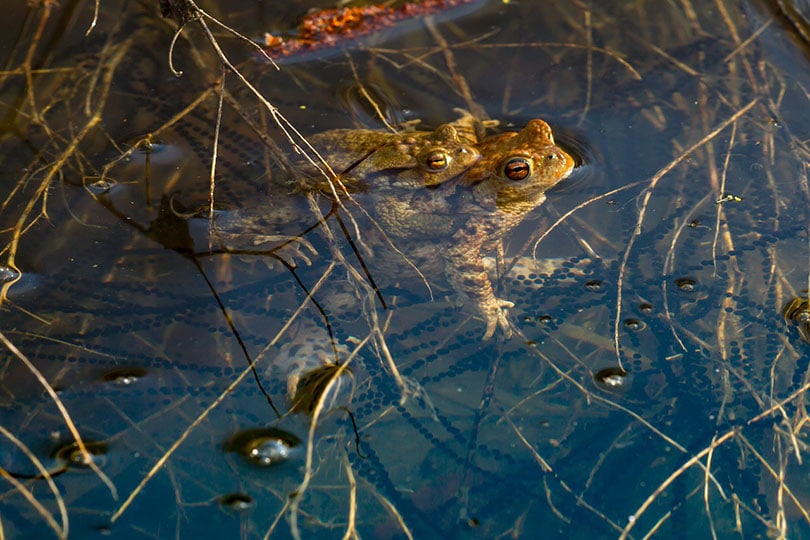
Best Spots for Frogs to Lay Eggs in the Wild
Picking out the best place to lay eggs comes naturally to many animals. Frogs are no exception to this rule of nature. They require specific features in an environment to lay their eggs. Frogs don’t reproduce during the dry or winter seasons. They wait for the rains to lay eggs in a wet area. Moisture is essential to the survival of the eggs. Not to mention, tadpoles can only live in water until they grow up.
Frogs love stagnant waters, so you’ll find many in ponds, swamps, or calm lakes. The water must be free-standing to sustain the eggs until they hatch. Some even lay eggs in drainage ditches where there’s warm water to keep the eggs alive.
How Long Does It Take for a Frog Egg to Hatch?
Frogs come in all shapes and sizes, and you can find so many species across the world. However, many frog species have one commonality, which is the life cycle. All frogs start as eggs that hatch into tadpoles and grow into adult frogs.
What’s interesting is that some frog eggs take 3 days to hatch while others take 25 days. The variation is due to the difference in species. Once the eggs hatch, they become tadpoles that resemble fish more than frogs.
Frogs that grow up in the wild can live up to 8 years. However, as pets, well-cared-for frogs live up to two decades.
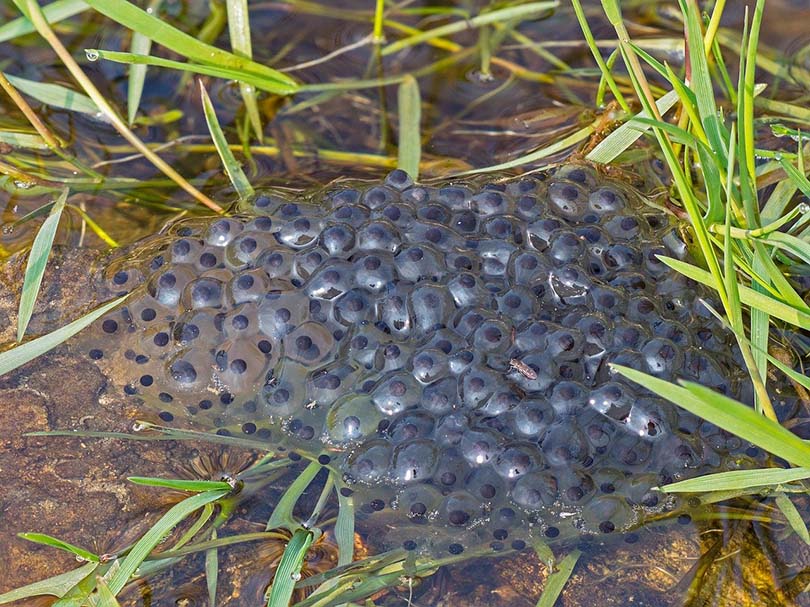
How Long Does It Take for Tadpoles to Turn Into Frogs?
Tadpoles look like tiny fish and have a tail and gills to help them survive in water. They go through a developmental state, during which their back legs and front legs develop. As the frog grows, its tail continues to shrink. However, the tadpoles can only grow under the right circumstances.
First, they need water to survive. Next is food because young frogs require proper nutrition. It will take a tadpole 14 weeks to grow into an adult frog.
It’s worth noting that not all frogs follow this life cycle. Others skip the egg stage and give birth to live tadpoles. The duration of one stage to the next also varies from one frog species to another. Tadpoles in the wild enjoy eating weeds that grow in ponds, and you can feed them pieces of lettuce at home.
Can You Move Frog Eggs?
You can move the eggs to another tank, but ensure you take extra care. They are delicate, and one slip-up can cost you a whole clutch.
If you want to move the eggs safely, first, you need to prepare their new home. The best setup is a fish tank with water, pondweeds, rocks, and dirt to recreate their natural habitat. Ensure you use water with the right pH for frogs and keep it at 59 to 86 F.
Gather the frog eggs in a plastic bag and place them in the tank without pouring out the eggs. It gives the frog eggs ample time to acclimatize to the new environment. Tie the bag with a string and leave it in the tank for 2 to 3 hours. Afterward, you can untie it and pour the frog eggs into the tank. These eggs will need an hour of sunshine each day to develop. In warmer climates, frogs have two reproduction seasons if the weather is nice and there is plenty of moisture around.
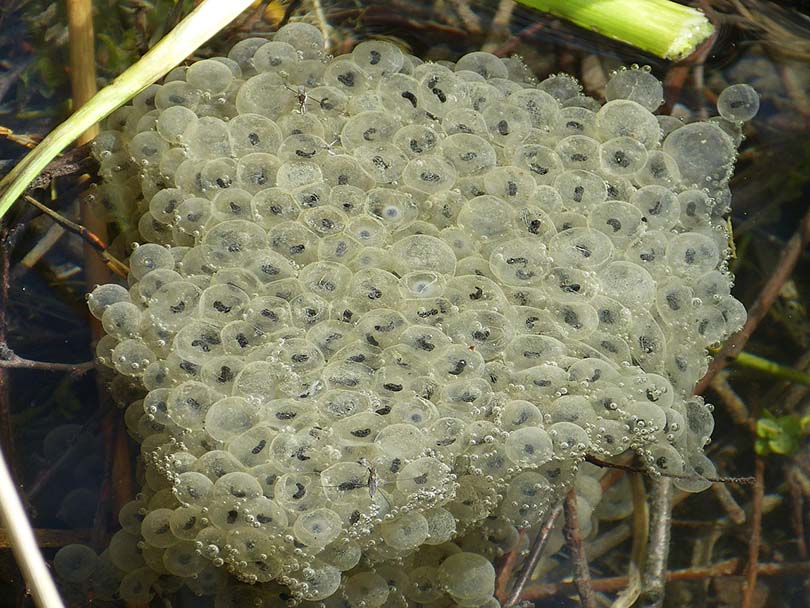
Can Frog Eggs Survive Out of Water?
Frogs and their eggs require water to survive. While adults don’t remain submerged in water, eggs and tadpoles must be in the water to survive. Both can dry up and die when they’re left without water.
When a frog lays eggs, it leaves them in a jelly-like substance that requires a lot of moisture. The moisture is instrumental not only in the survival but also in the development of the eggs. The tadpoles will live there for some time before growing into adult frogs.
Do Frogs Eat Their Babies?
Many frog pet owners separate frogs from their young because of their cannibalistic nature. Yes, frogs eat many small creatures, including their babies. The instinct that causes adult frogs to abandon their eggs soon after laying them is a contributing factor.
Frogs enjoy eating a wide range of foods. If necessary, they will also include their young in this menu. A good example is the African Clawed frog that eats its tadpoles.


Conclusion
Frogs are fascinating creatures and can make amazing pets. These amphibians start life off as eggs that hatch into tadpoles. The tadpoles then grow into adult frogs. However, that isn’t the case for all species, as some give birth to live tadpoles.
The eggs require 3 to 25 days to hatch into tadpoles. Most frogs don’t look after their eggs and tend to lay thousands at a time. Only a tiny percentage of these eggs will survive into adulthood. Other frogs only lay a handful of eggs they look after until they hatch.
Eggs and tadpoles require moisture to survive. Otherwise, they dry up and die. After hatching, a tadpole will take up to 14 weeks to grow into an adult frog.
- You might be interested in: 15 Most Famous Fictional Frogs (With Videos)
Featured Image Credit: Photorama, Pixabay
